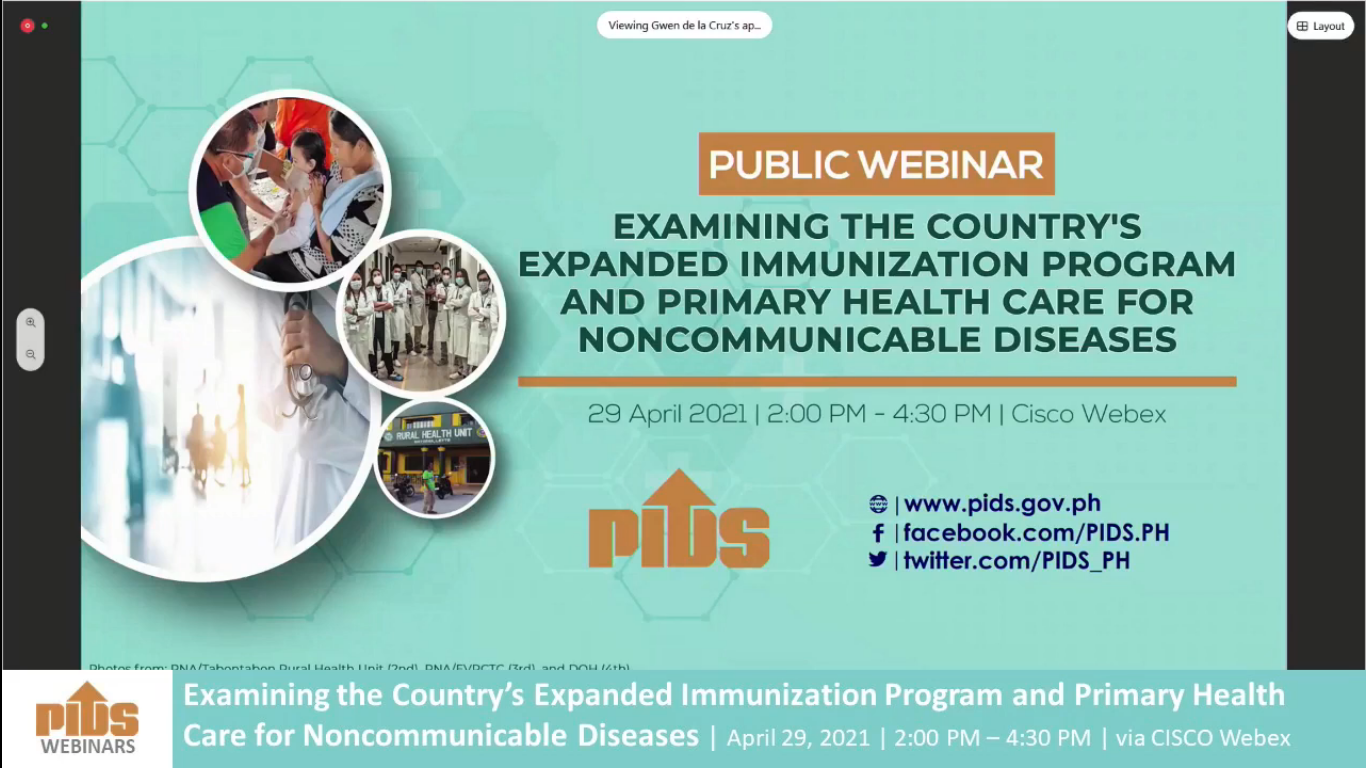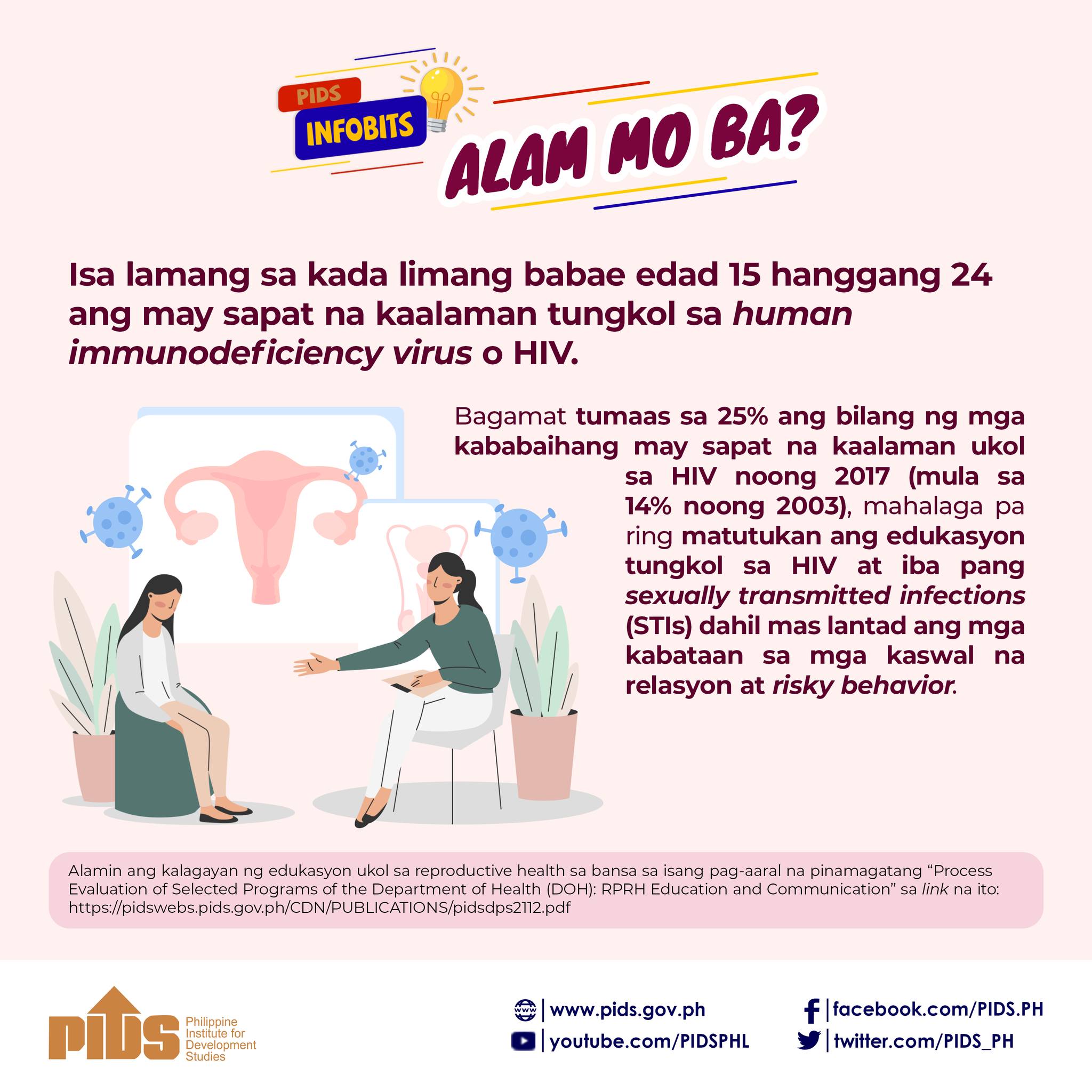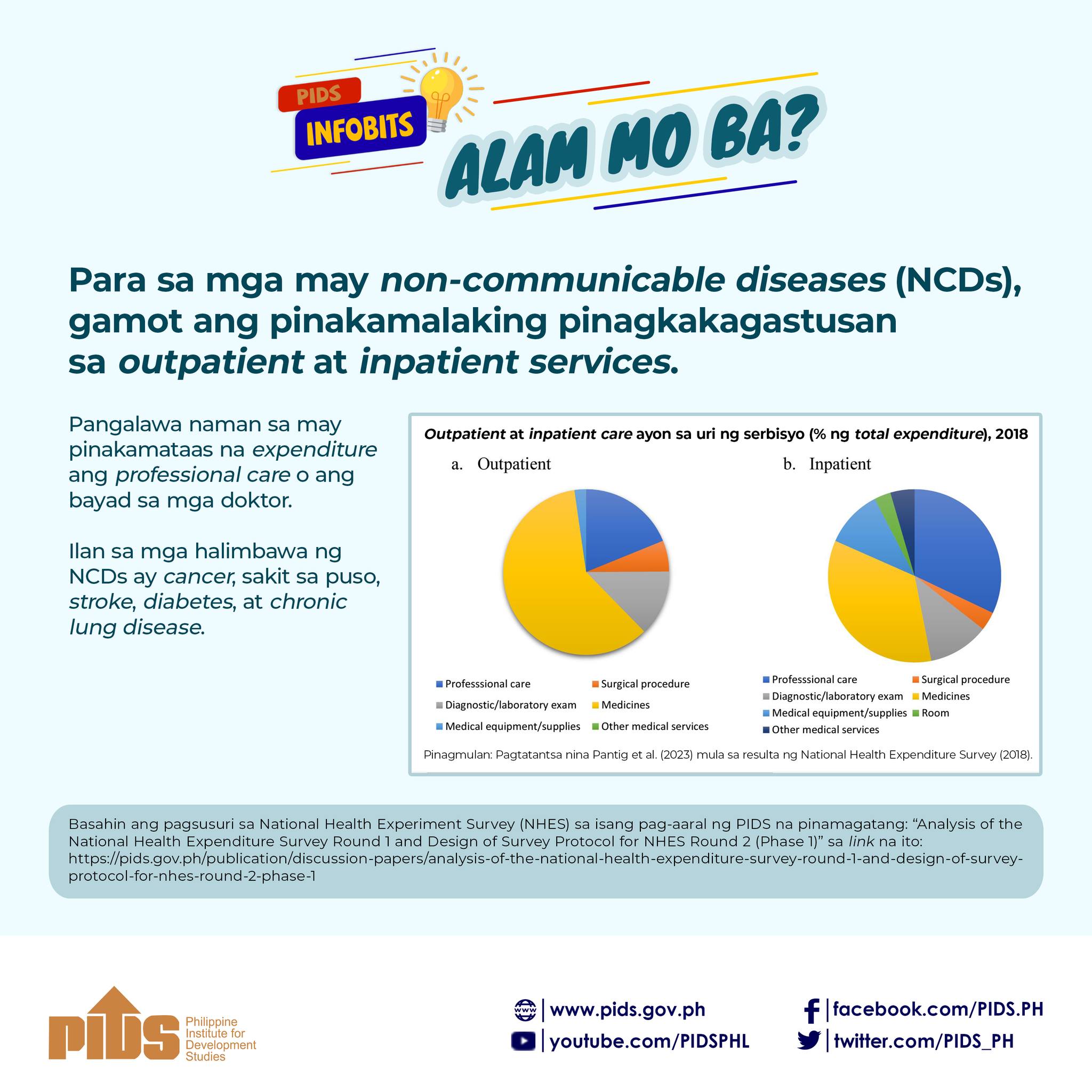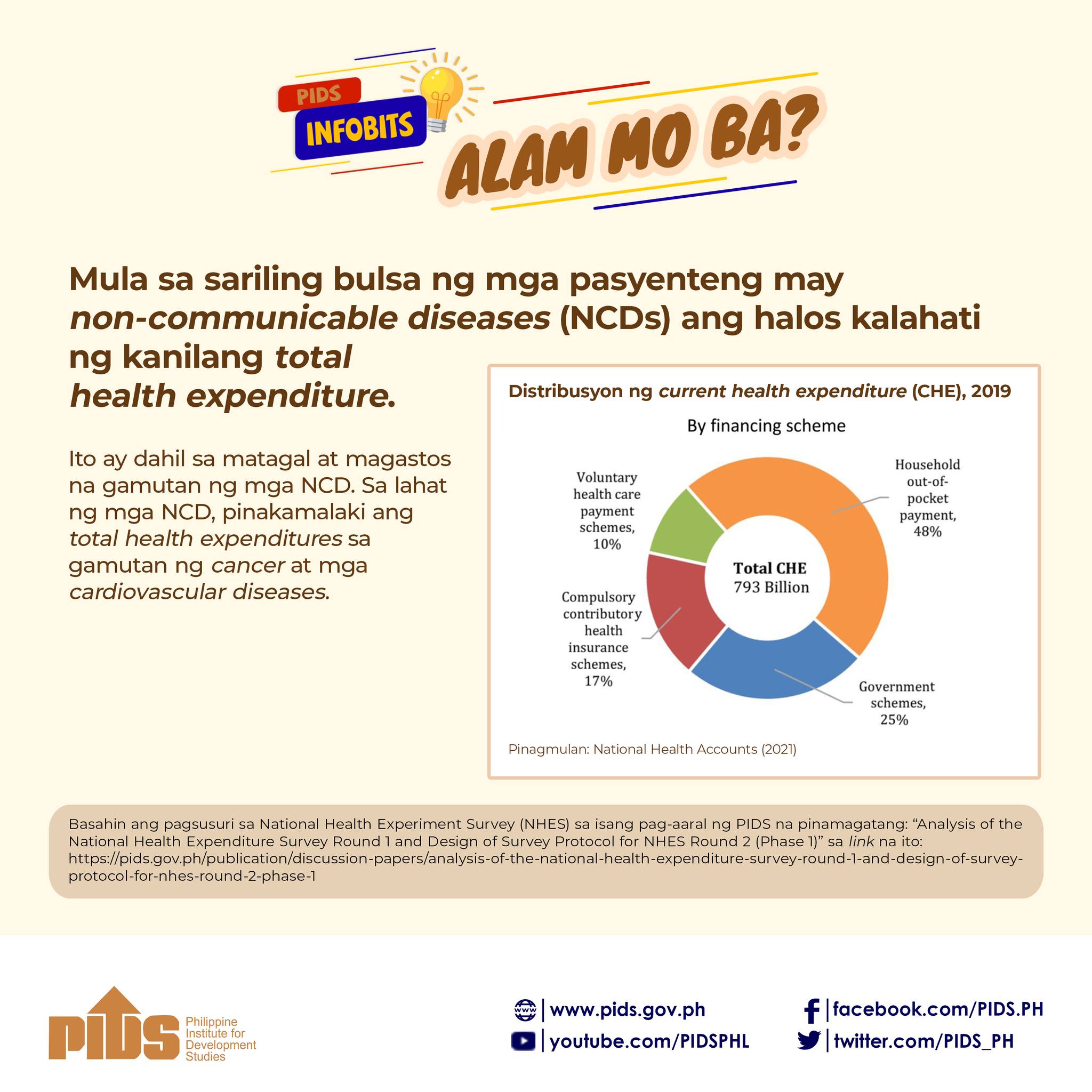THERE are worse things than death: the slow and torturous path to the end of life. Some illnesses, to note, can permanently disfigure people, hinder their growth and development and scar them and their families for life. Many of those afflicted can only wish for death to take them sooner rather than later.
These are just some of the things that Neglected Tropical Diseases (NTDs) and Human Immunodeficiency Virus infection and Acquired Immune Deficiency Syndrome (HIV/AIDS) can do to people. In the Philippines, the number of people either at risk of contracting these diseases and those silently living with them is huge.
Eliminating these diseases, however, is a tall order considering that under Goal 3 of the Sustainable Development Goals (SDGs), the world intends to eradicate the “epidemics of AIDS, tuberculosis, malaria and NTDs and combat hepatitis, water-borne diseases, and other communicable diseases” by 2030. The world may have forgotten it’s been grappling with HIV/AIDS for 37 years—the pandemic was recognized in 1981 by the US Centers for Disease Control and Prevention, and it expects eradication in 12 years’ time.
NTDs
THE World Health Organization (WHO) defines NTDs as “a diverse group of disease conditions, mostly parasitic infection, that gravely affect people in tropical and subtropical regions.”
WHO Western Pacific Region Coordinator Rabindra R. Abeyasinghe said there are about 20 NTDs globally, and of this number, around 15 are present in the Western Pacific Region. At least one of these NTDs is present in majority of countries in the region.
Abeyasinghe said NTDs continue to be a problem for many countries because there is very little interest in addressing them. Unfortunately, these diseases affect large populations that have poor access to treatment.
“[NTD prevalence] in Asia is not yet severe,” former WHO Western Pacific Region Regional Director Shin Young-soo said. “Most of these diseases, we know how to treat. NTDs are called poor man’s disease because proper treatment could not be given.”
But just because the situation in the region is “not yet severe,” countries should continue business as usual, especially with the deadline for SDGs fast approaching.
PCs
DATA obtained from the WHO showed there are at least three NTDs in the Philippines that imperil the lives of around 52.9 million or more than half of Filipinos. These are soil-transmitted helminthiases (STH) or intestinal worms, lymphatic filariasis (aka elephantiasis) and schistosomiasis (aka snail fever).
Around 43 million Filipinos are at risk of contracting STH, 7 million are at risk of lymphatic filariasis and 2.9 million are at risk of schistosomiasis. The WHO said these numbers represent those who are not covered by preventive chemotherapy (PC) or mass drug administration.
PC is among the primary interventions recommended by the WHO. The other four interventions are: veterinary public health; provision of safe water, sanitation and hygiene; vector and intermediate host control; and case management and rehabilitation.
In terms of STH, which is placing at risk the most number of Filipinos, the WHO said there was a slight decline in the national coverage of deworming among school children in the country to 71 percent in 2016 from 72 percent in 2015. However, compared to the 2011 to 2014 period, it was in the years 2015 and 2016 that saw the highest increase in coverage among school-age children.
Deworming
FOR preschool children, deworming coverage is significantly higher.
In 2016 coverage was at 94 percent, significantly higher than the 63-percent coverage in 2015. The coverage in 2016 was the highest level between 2011 and 2016.
However, due to the recent Dengvaxia controversy, there is a growing concern that coverage will decline. This is especially the case since some parents are scared to submit their children for deworming due to the Dengvaxia scare.
Recent interviews with staff members of the Lias Elementary School in Bulacan confirmed that while there is sufficient medicine, many parents do not want their children to be dewormed because of the thought that they would suffer the same fate as the children injected by Dengvaxia.
In some cases, parents of Dengvaxia children who have other school-age children refuse to submit their other children to Dengvaxia. Parents prefer that health centers administer the vaccines rather than the schools, which were the ones that initially distributed the Dengue vaccine.
“’Yung iba talaga, hindi talaga sila pumapayag. Kahit may sulat na pinamimigay at may pirma doon na hindi nila pinapayagan, talagang ayaw nila. Halimbawa, 20 ’yung bata, ang magbabalik lang lima, yung 15 hindi. Sa mga bukas ang mga isipan, pumapayag sila,” the School Nutrition Coordinator of Lias Elementary School told the BusinessMirror. “Pero dahil nga doon sa Dengvaxia na nangyari doon na nagkaroon ng isyu. ’Yung 725, bumagsak nga dahil noong may namatay sa Dengvaxia, ayaw na talaga nila [Some parents refused to allow their children to be vaccinated, even if there’s a signed letter explaining the vaccination. For example, of 20 children only five will return to be vaccinated. Parents who are open-minded allow their children to be vaccinated. But the Dengvaxia controversy created an issue. We expect the number to be lower for 2018 compared to the 725 children that were dewormed in 2017. When a child died due to Dengvaxia, parents really refused to deworm their children].”
Forum
NONETHELESS, the WHO said the NTD Unit at the Disease Prevention and Control Bureau of the Department of Health Philippines convenes the NTD Stakeholders Forum annually to bring together all stakeholders working on elimination and control of NTDs ranging from relevant ministerial partners such as the Environmental Related Diseases Division, the Pharmaceutical Division, the Research Institute for Tropical Medicine, regional and provincial authorities, nongovernmental organizations, local and national universities to international donors and partners.
The forum provides a valuable opportunity to update progress of control and elimination of NTDs in the country and research gap, share various best practices to improve advocacy on NTDs, recognize and forge the existing partnership and explore other possible collaboration opportunities to advance the NTD agenda in the country.
The forum also enables information sharing between the national program and academia so that translation of scientific evidence into policies and guidance to support control program’s progress is enhanced.
HIV/AIDS
WHO Philippines Representative Gundo Aurel Weiler said HIV affects less than 1 percent of the Philippine population. He said there are about 80,000 Filipinos living with HIV.
Further complicating this problem is that half of the number of people believed to be living with HIV are not aware they have been infected, according to Weiler.
This means 40,000 Filipinos living with HIV have not been tested and not properly informed about their condition, posing a threat to themselves and prospective or current partners.
“There are many people who live with the virus but have not been tested and who are unaware. And that’s a real problem because if they are unaware of their own infection, they put their own health in danger,” Weiler said. “Of course, people who are not aware of their own infection might be at higher danger of passing on the virus unknowingly to their partners.”
Based on the results of the 2017 National Demographic and Health Survey (NDHS), only 25 percent of women aged 15 to 49 have comprehensive knowledges about HIV/AIDS.
Around two-thirds or 66 percent of women aged 15 to 49 know that using condoms is a means of preventing HIV transmission.
Misconceptions
SOME 84 percent of women know that limiting sexual intercourse to one uninfected partner who has no other partners can reduce the risk of HIV. Six in 10 women or 62 percent are aware of both these HIV prevention methods.
However, misconceptions about this deadly disease abound.
Among the most common misconceptions about HIV/AIDS in the Philippines is that the disease can be transmitted by mosquito bites and that a person can be infected by sharing food with a person who has HIV.
About 61 percent of women would not buy fresh vegetables from a shopkeeper who has HIV. Seven in 10 women (71 percent) hold discriminatory attitudes toward people living with HIV.
More than half of women or 53 percent age 15 to 49 who have heard of HIV or AIDS do not think that children living with HIV should attend school with children who are HIV negative.
“Comprehensive knowledge means knowing that the risk of getting HIV can be reduced by using condoms and limiting sex to one uninfected partner, knowing that a healthy person can have HIV, and rejecting the two most common local misconceptions about HIV prevention and transmission,” the Philippine Statistics Authority (PSA) said in a recent presentation.
While only 2 percent of young women age 15 to 24 had sexual intercourse before age 15, around 1 in 5 women age 18-24 had sexual intercourse before age 18.
Vulnerability
HOWEVER, around 2 percent of young women age 15 to 24 who had sexual intercourse in the past 12 months were tested for HIV and received their results.
Further data showed that 45 percent of women know where to get an HIV test. Knowledge of where to get an HIV test increases with wealth, from 32 percent of women from the poorest households to 59 percent of women from the wealthiest households.
However, only 4 percent of women have ever been tested and received their results. Within the past 12 months, only 2 percent of women were tested for HIV and received their results.
This is a problem.
Weiler said prevention is the key to putting an end to the increase in HIV incidence. He said it is important to get tested and to emphasize the use of contraceptives during intercourse, especially among vulnerable groups such as men who have sex with men and the transgender communities.
Awareness
WEILER said there is also a need to increase awareness about the other ill effects of drug use. He added there have also been cases where HIV was contracted through drug use, particularly with the use of injections.
He added that openly discussing the dangers of HIV and the importance of prevention are also necessary in all communities, including religious ones, family, and among friends in order for people to adopt safe behavior.
“In general we recommend the Philippines to step up HIV prevention efforts and treatment. It is important for more people to have access to antiretroviral treatment and to do so more people should get tested for HIV, for people to become aware of their status,” he said.
Weiler admitted that among the issues that prevent more people from getting tested is the high stigma associated with HIV. This is one of the most important factors why despite the high number of interventions on the health side, HIV/AIDS in the country has been increasing.
Concern
ON October 8 Young-soo said the trend in HIV incidence all over the region has been on the decline except for the Philippines, which is a cause for concern.
Weiler said the increase in HIV prevalence in the Philippines has increased by 140 percent in the last six to eight years. Elsewhere in the region and the world, HIV incidence has been on a 20-percent decline.
“I think we do have a whole range of interventions from the health side, treatment is becoming available and [there’s an] increasing number of clinics that provide treatment for HIV specifically in the country,” Weiler said.
“But we do have a lack of people who come forward to seek treatment so if there’s a lack of interventions [these are] on the side of awareness so that people can adopt the proper behaviors to prevent transmission. Those who think they might have been at risk in the past [should come] forward to a test because only if people are aware of their HIV status can they seek treatment,” he stressed.
Way forward
ADDRESSING these silent killers not only requires increased support in terms of financing and facilities but also greater awareness about the dangers of acquiring or transmitting them.
The WHO is urging governments to pour resources not only in programs such as mass vaccinations but also in information campaigns, particularly where HIV/AIDS is concerned. The treatment of the disease can only begin when testing has been completed.
For Michael R.M. Abrigo of the Philippine Institute for Development Studies (PIDS), the treatment of the disease begins with awareness.
The empirical study by Abrigo, a PIDS fellow, showed “that increasing HIV/AIDS knowledge may result in substantial cost-savings from averted” sexually transmitted infection (STI).
“When sex education is included as part of regular large-scale public school curricula, the cost of increasing STI knowledge would be trivial, implying considerable resources that could be freed for other government programs because of better sexual behaviors,” Abrigo wrote in his study titled “HIV/AIDS Knowledge and Sexual Behavior of Female Young Adults in the Philippines.” His documentation of heterogeneous responses to increased STI knowledge across different populations “highlights the need for targeted interventions adapted to particular settings for anti-STI campaigns to be effective.”
But while the WHO does not expect any cure for HIV/AIDS any time soon, saving lives can start by taking at least one pill a day.
For Abrigo, it’s one step to awareness that’s going to save the day.










